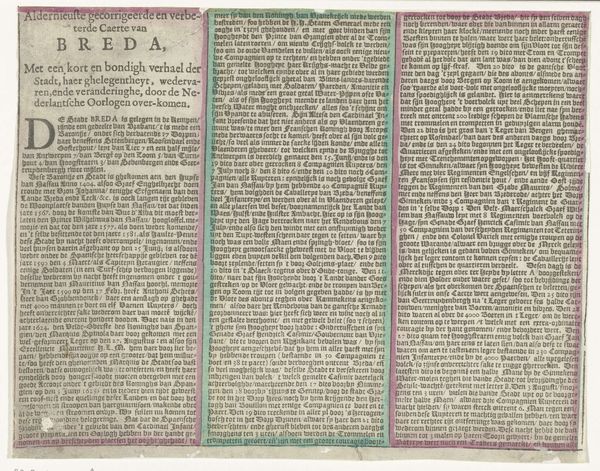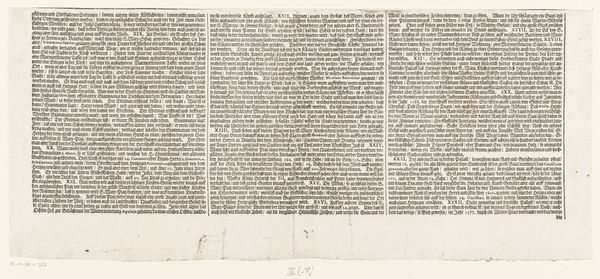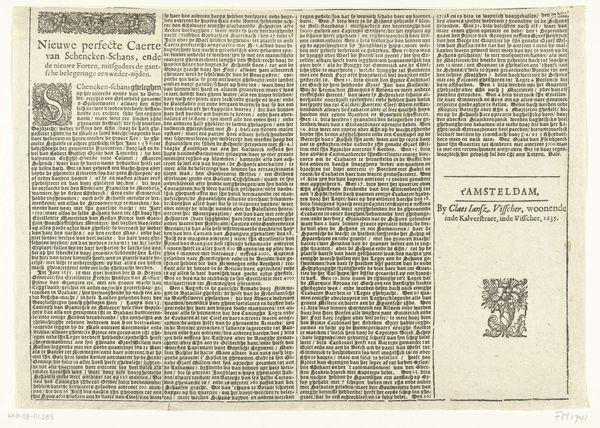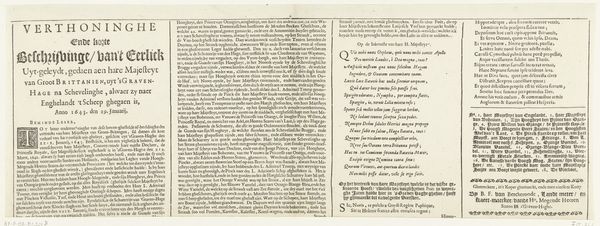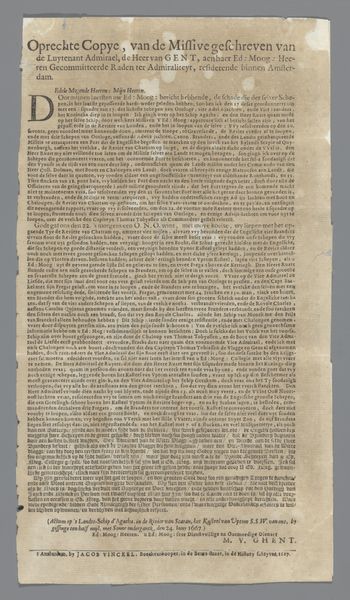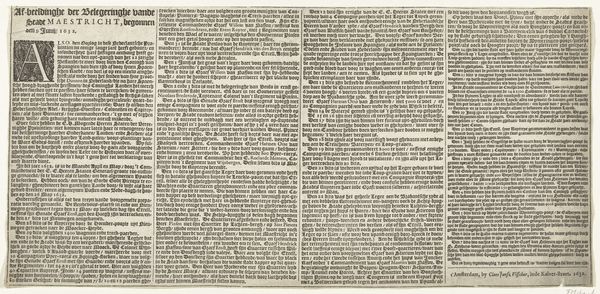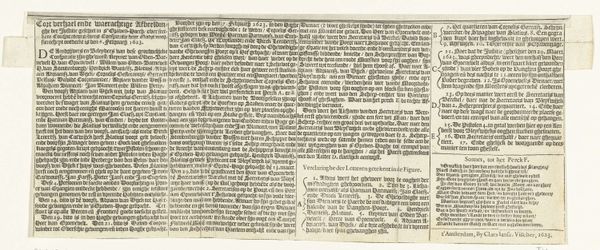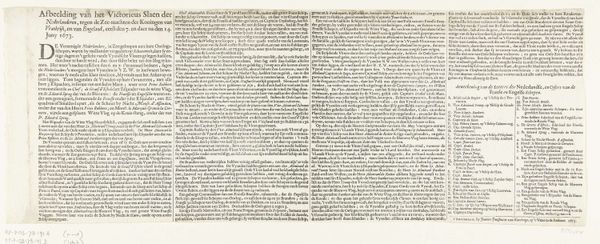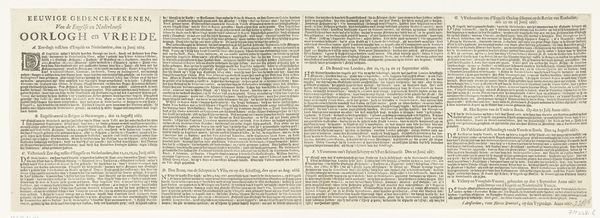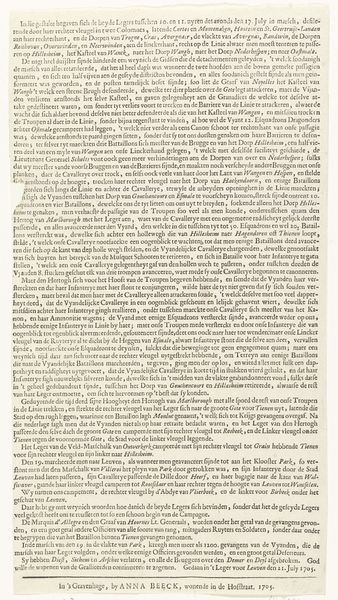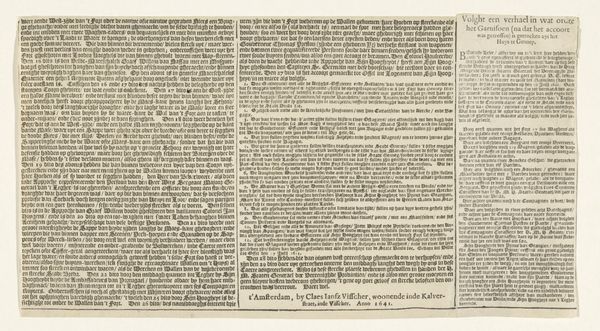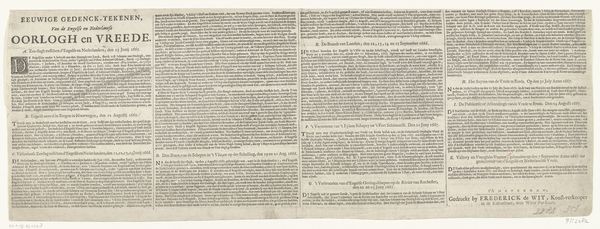
Tekstblad bij de kaart van het beleg van Breda (rechterhelft), 1637 1637
0:00
0:00
#
dutch-golden-age
# print
#
text
Dimensions: height 186 mm, width 245 mm
Copyright: Rijks Museum: Open Domain
This is a printed text sheet from 1637 by Claes Jansz. Visscher, now held at the Rijksmuseum, which chronicles the siege of Breda. The dominant visual symbol here is the text itself. In its dense, orderly arrangement, we can see how written language was perceived not just as a means of communication but as a powerful tool for documenting and controlling narratives. Consider the act of writing as a performative gesture. Here, it's akin to the creation of a monument. The disciplined lines of text echo similar patterns found in ancient Roman inscriptions, where the act of recording events was a means of immortalizing them. Yet, while the Romans often carved their narratives in stone, here, the printing press allows for wider dissemination and a more democratic form of memory. This reflects a shift in the collective psyche, where the power of information begins to decentralize. The act of documenting Breda's siege serves as a potent reminder that even in times of conflict, the urge to record, remember, and immortalize endures. It remains a testament to the human spirit’s resilience and its relentless pursuit of meaning through symbols and stories. This cyclical progression of memory and memorialization resurfaces, evolves, and takes on new meanings in different historical contexts.
Comments
No comments
Be the first to comment and join the conversation on the ultimate creative platform.
